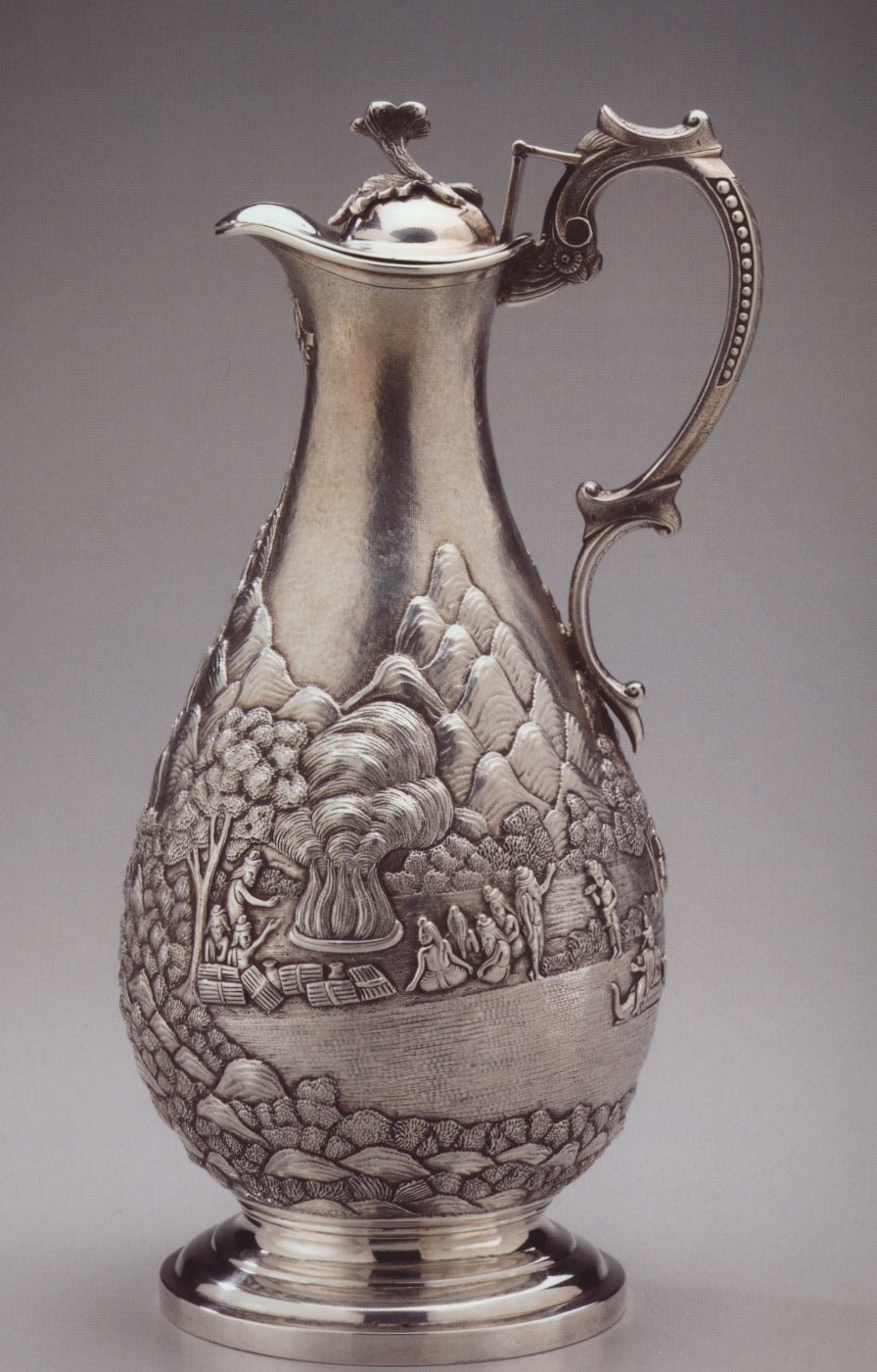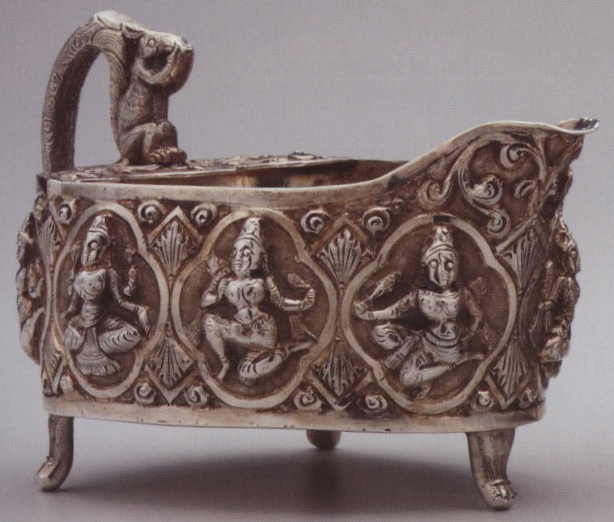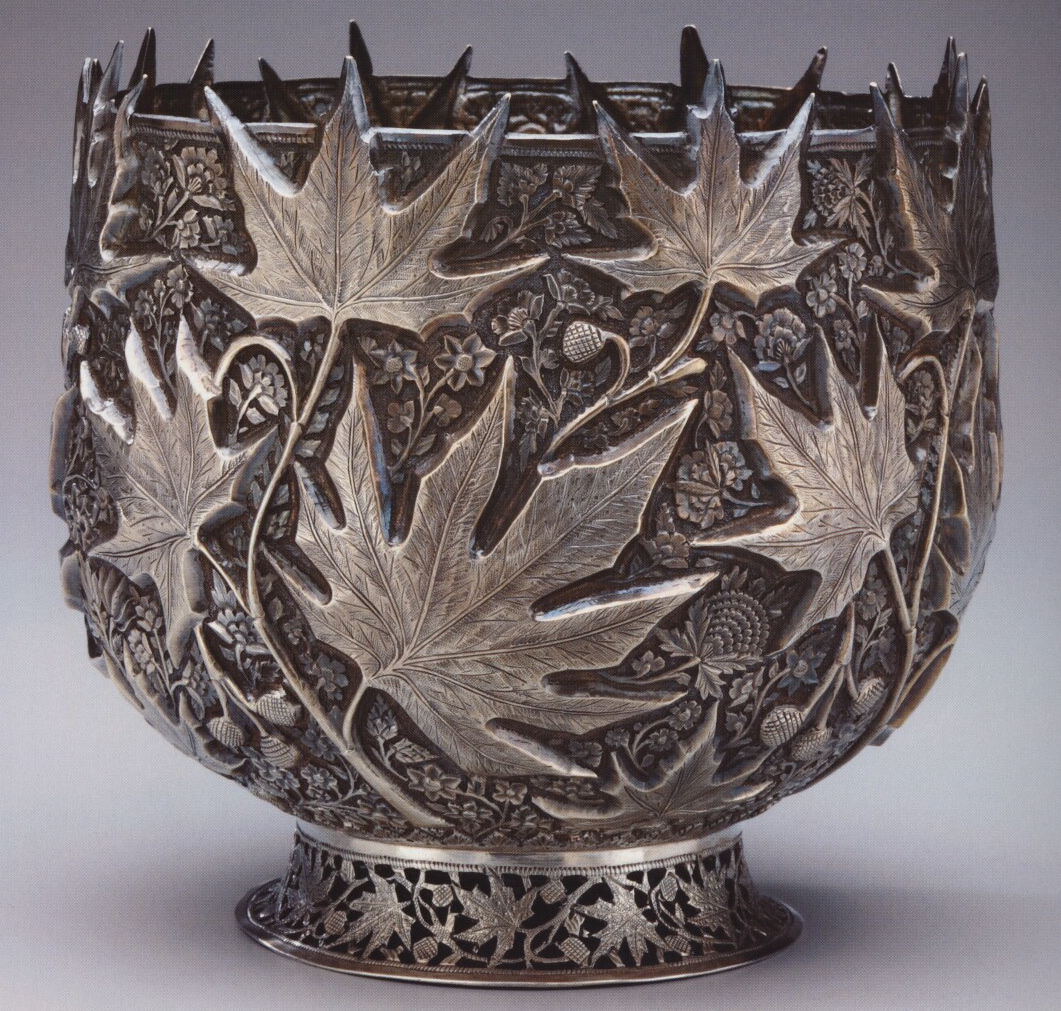 Chinar Leaf Bowl, Kashmir, c. 1885
Chinar Leaf Bowl, Kashmir, c. 1885
Paul Walter Collection
Note: All objects shown in this post are from the Paul Walter collection unless otherwise indicated.
The Raj, the period of British occupation in India, lasted from the late 19th century to the early 20th century. During this time, the silversmiths of India produced an incredible array of beautiful luxury tableware—including tea services, bowls, goblets, ewers, cutlery, gravy boats and card cases. Initially these pieces were made as gifts and for use in the homes of the British in India. They were also exhibited widely in Europe at expositions and shows. One of these was the Paris exposition of 1878, where the tea service for 12 given by a maharaja to the visiting Prince of Wales (later Edward VII) in 1876 was on display, along with many other examples of Kashmiri silver. Indian silver soon became very sought-after in British and European markets. The London establishments Liberty & Co., Regent Street and Proctor & Co., Oxford Street, set up workshops in India to meet the demand.
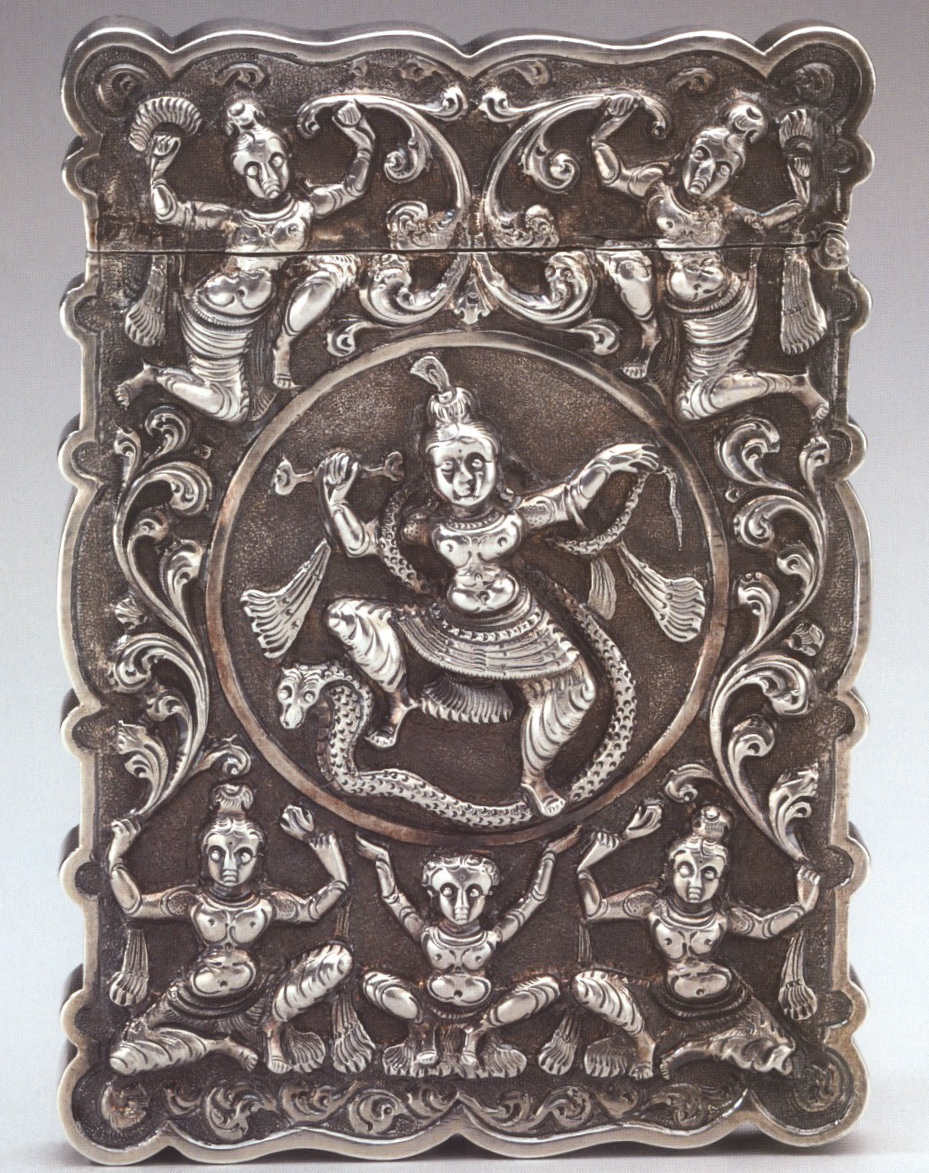 Calling Card Case featuring Krishna, Madras, c. 1880
Calling Card Case featuring Krishna, Madras, c. 1880
A tradition of European silversmithing had been established in Madras and Calcutta in the 1760s, but by the 1860s the Indian silversmiths had made it their own—wedding their traditional designs and love of embellishment with objects to suit the needs of the British.
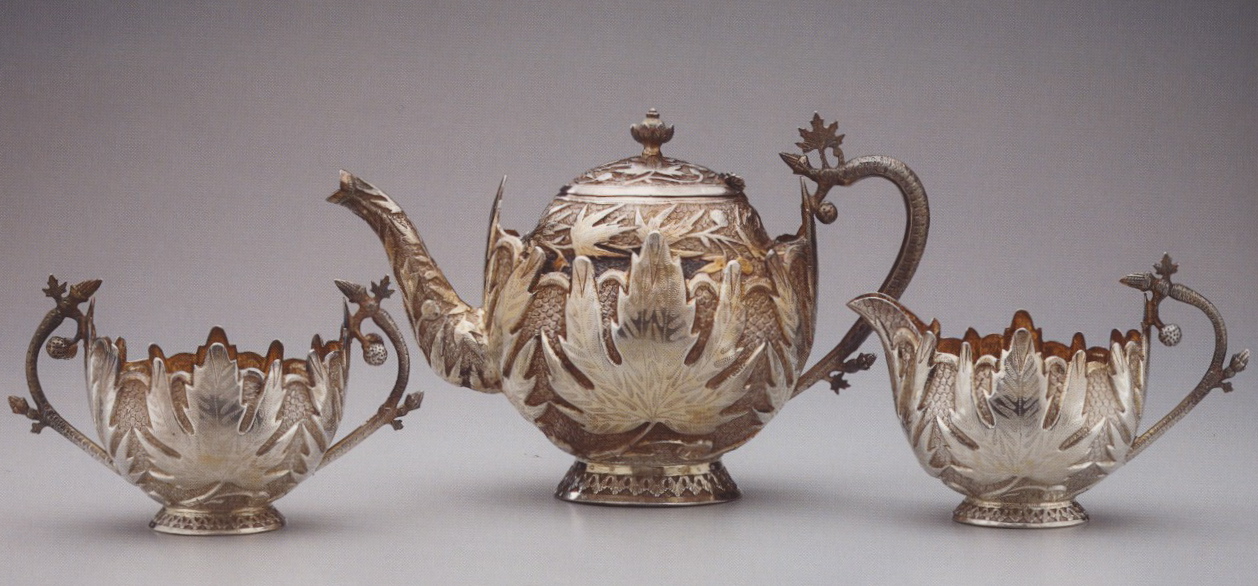 Chinar Leaf Tea Service, Kashmir, c. 1885
Chinar Leaf Tea Service, Kashmir, c. 1885
The British love affair with tea began when they came across it in China, and silver tea services had long been a staple in the elegant English home. So when the British came to India and discovered that two of Indian’s greatest natural resources were tea (from northern India) and silver, the result was inevitable.
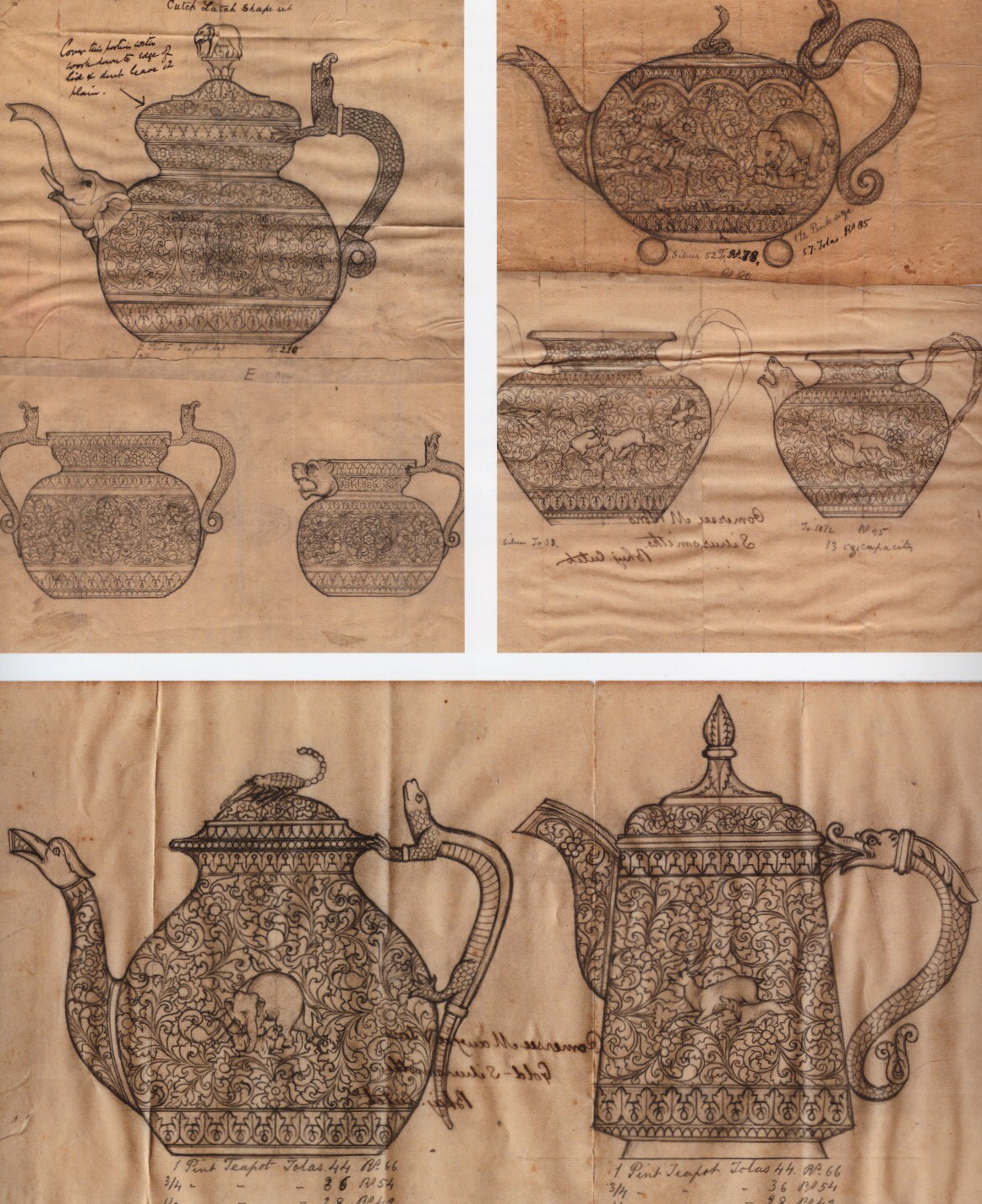 Workshop drawings of Oomersee Mawjee & Sons of Kutch
Workshop drawings of Oomersee Mawjee & Sons of Kutch
various dates, c. 1899-1904
What makes this work so fascinating is the ingenious blending of Indian motifs with western forms. These pieces have tremendous visual interest, intricate detail and texture. The Indian silversmiths created a wonderful hybrid, objects no longer strictly Indian or western, but an interesting amalgam of the two.
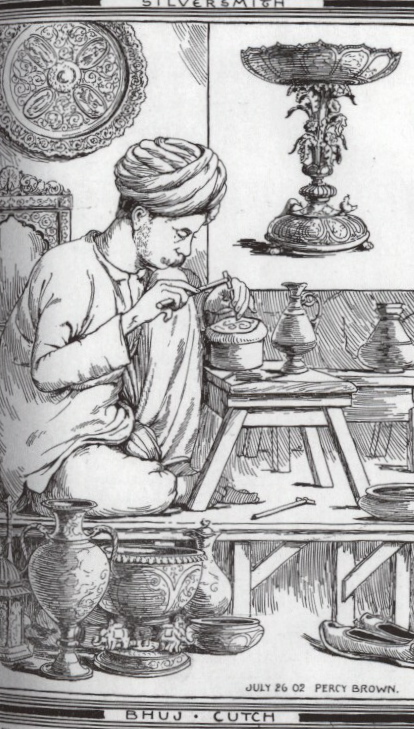 Kutch Silversmith at Work
Kutch Silversmith at Work
Sketch by Percy Brown after John Lockwood Kipling, 1902-03
Another fascinating aspect of silver work produced during the Raj is that the various Indian regional design traditions, adapted for these new uses, were reflected in the objects. The silver from Kutch in Gujarat, in far western India, is heavily embossed, filled with all-over curves and arabesques. The patterns appear quite abstract and are often embellished with wonderful details such as a tea pot handle fashioned in the shape of a serpent, or a spout in the form of an elephant’s head.
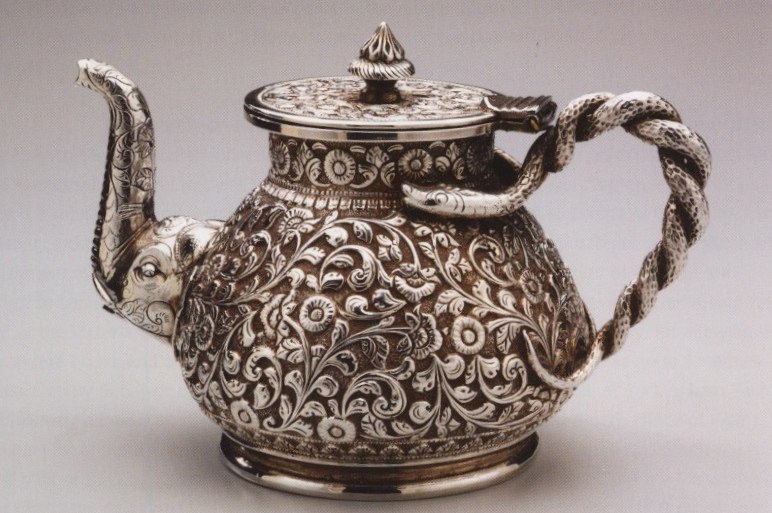 Kutch teapot with snake handle and elephant-head spout, c. 1880
Kutch teapot with snake handle and elephant-head spout, c. 1880
Private collection
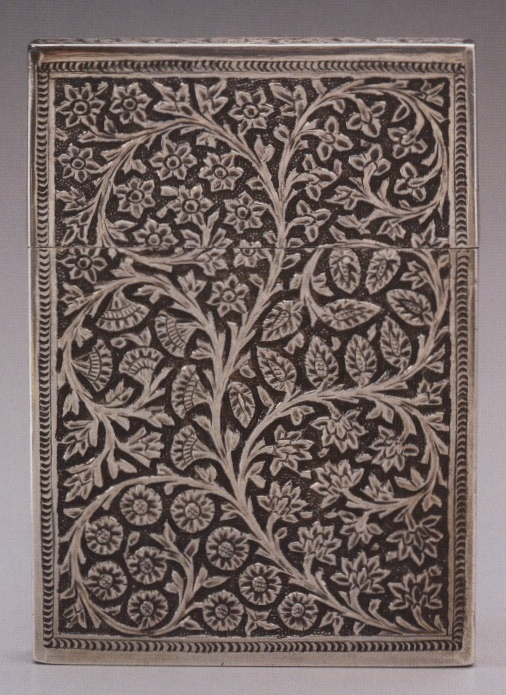 Calling Card Case with Floral Pattern, Kutch, c. 1880
Calling Card Case with Floral Pattern, Kutch, c. 1880
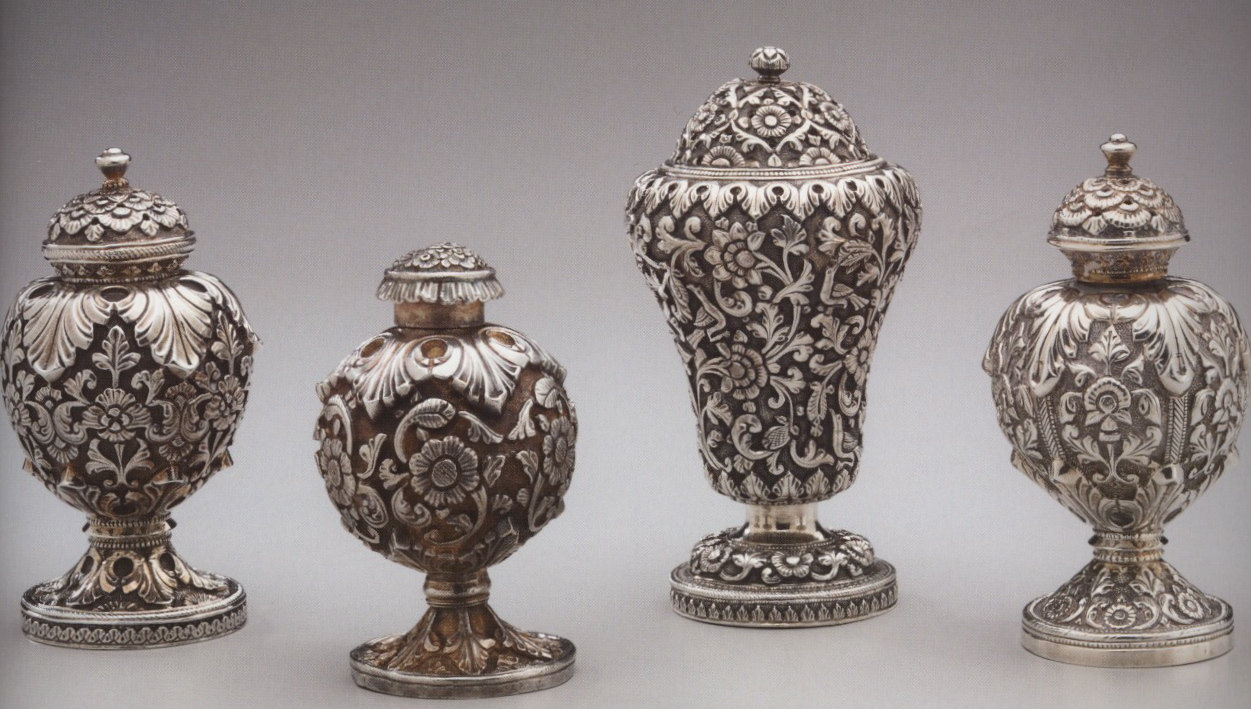 Four Pepper Pots, Kutch, c. 1885-1910
Four Pepper Pots, Kutch, c. 1885-1910
The silver produced in Calcutta contains very different imagery, depicting idyllic scenes from rural Bengali life—workers picking fruit, fetching water, planting or harvesting grain—as well palm trees, and an occasional cow or itinerant holy man.
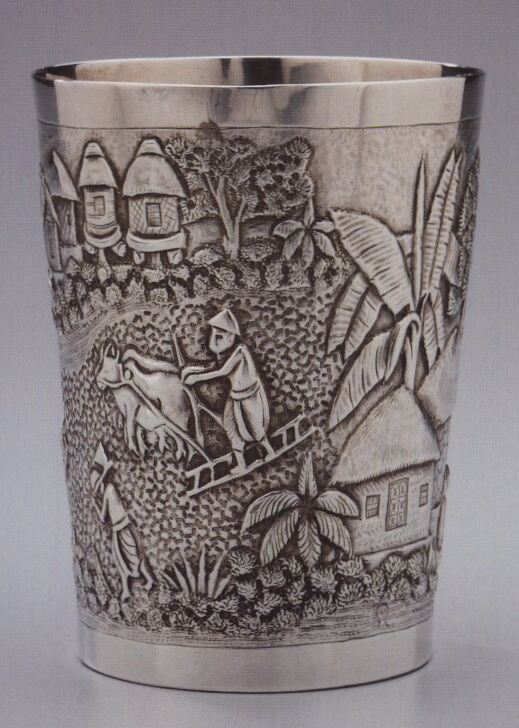 Beaker with Village Scenes, Calcutta, c. 1885
Beaker with Village Scenes, Calcutta, c. 1885
The so-called Swami silver produced in Madras was filled with Hindu imagery—gods and temples, processions and scenes of music and dance. Much of this work was produced by P. Orr & Sons, a British firm established in India in 1876.
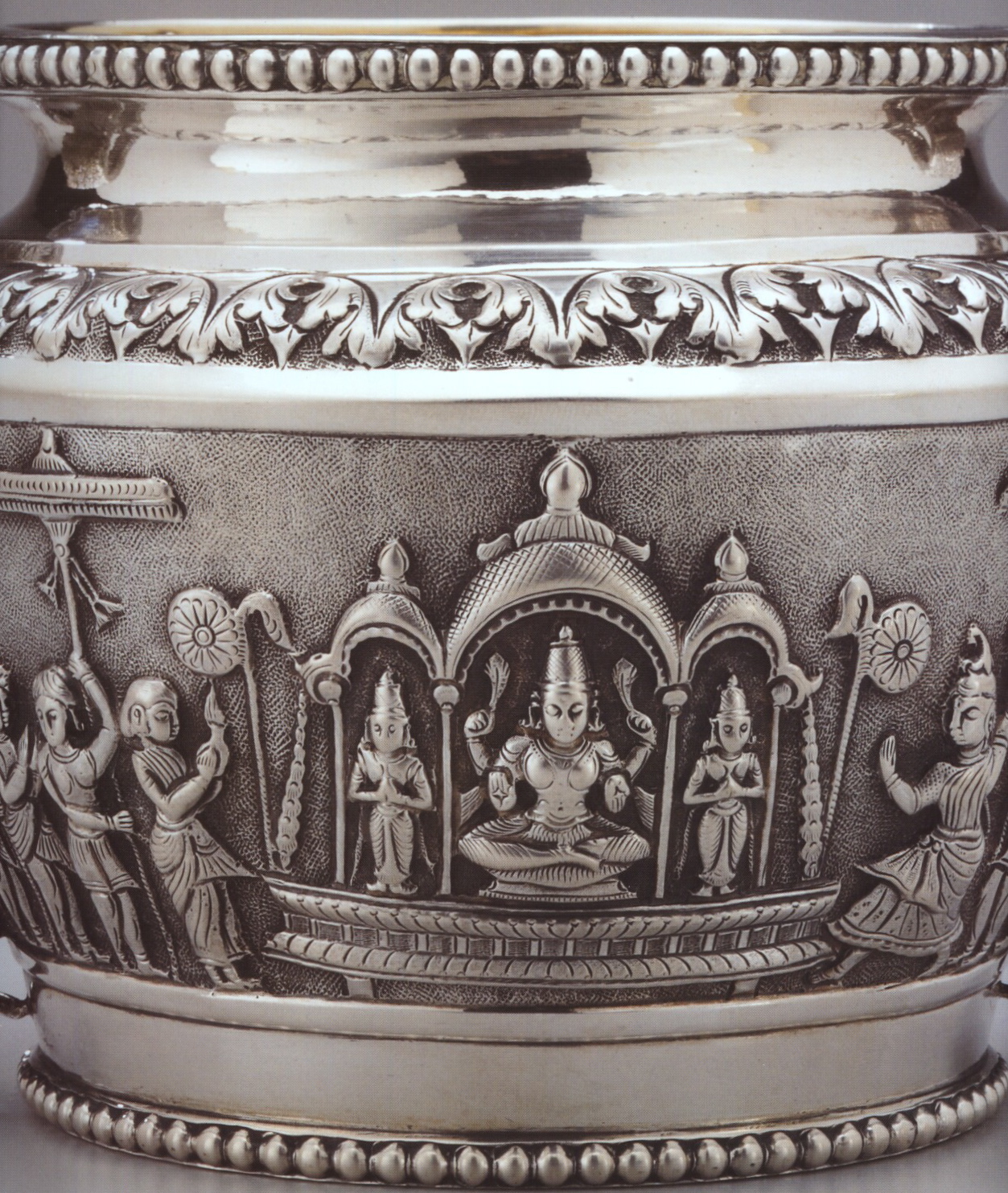 Five-piece Tea Service (detail)
Five-piece Tea Service (detail)
P. Orr & Sons, Madras, c. 1876
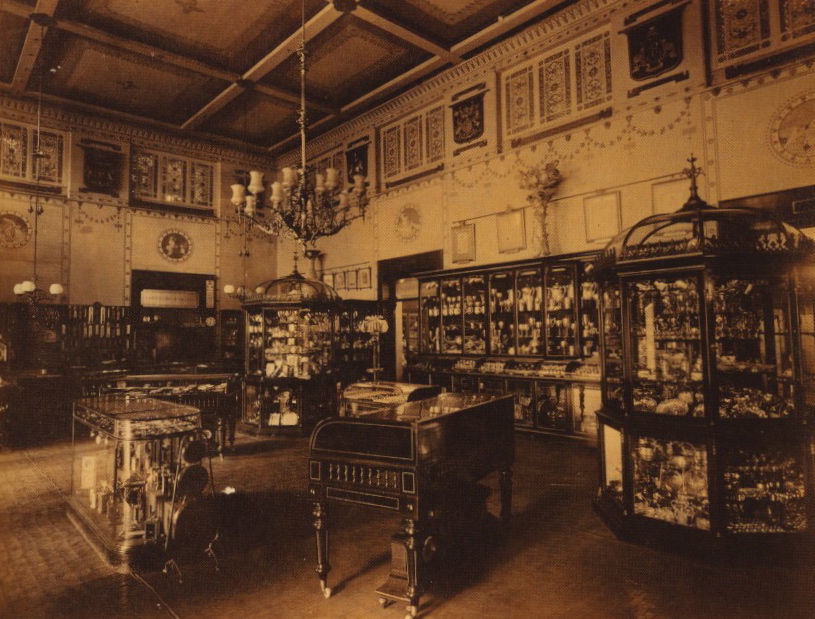 P. Orr & Sons showroom, Madras, c. 1899
P. Orr & Sons showroom, Madras, c. 1899
Courtesy: City Palace Museum, Udaipur
The silversmiths of Kashmir produced some of the most beautiful pieces of the period, highly embellished with botanical imagery. The British had a presence in Kashmir by the early 19th century and greatly admired the crafts of Kashmir, including the weaving. Of particular interest was the “shawl pattern” or paisley. The paisley, which looks like an elongated and stylized mango, got its name from the town of Paisley in Scotland, where many shawls of this pattern were woven. By 1887, silversmiths were incising paisley designs on plain silver against a background of intricately incised leaves, flowers and trees of the region, three of which dominated the designs. Coriander was depicted on the stem, often in continuous scroll work. The poppy, a very popular motif in Mughal art, was depicted both as closed buds and in full flower. The chinar leaf (from the Oriental plane tree (platanus orientalis) was often used in repoussé, with a background design of poppies or coriander (see a superb example at top of post.)
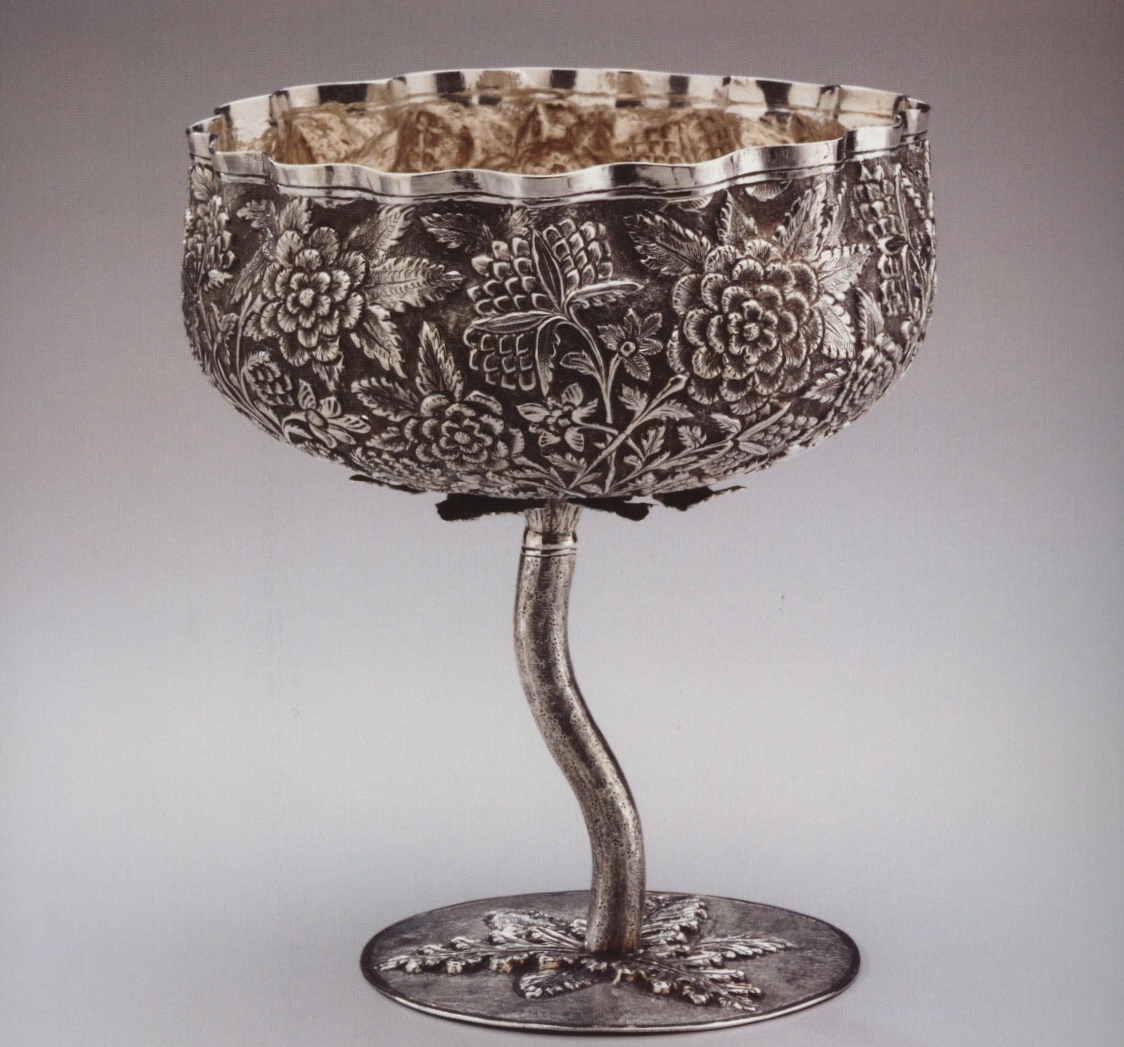 Lobed Stemmed Bowl, Kashmir, c. 1880
Lobed Stemmed Bowl, Kashmir, c. 1880
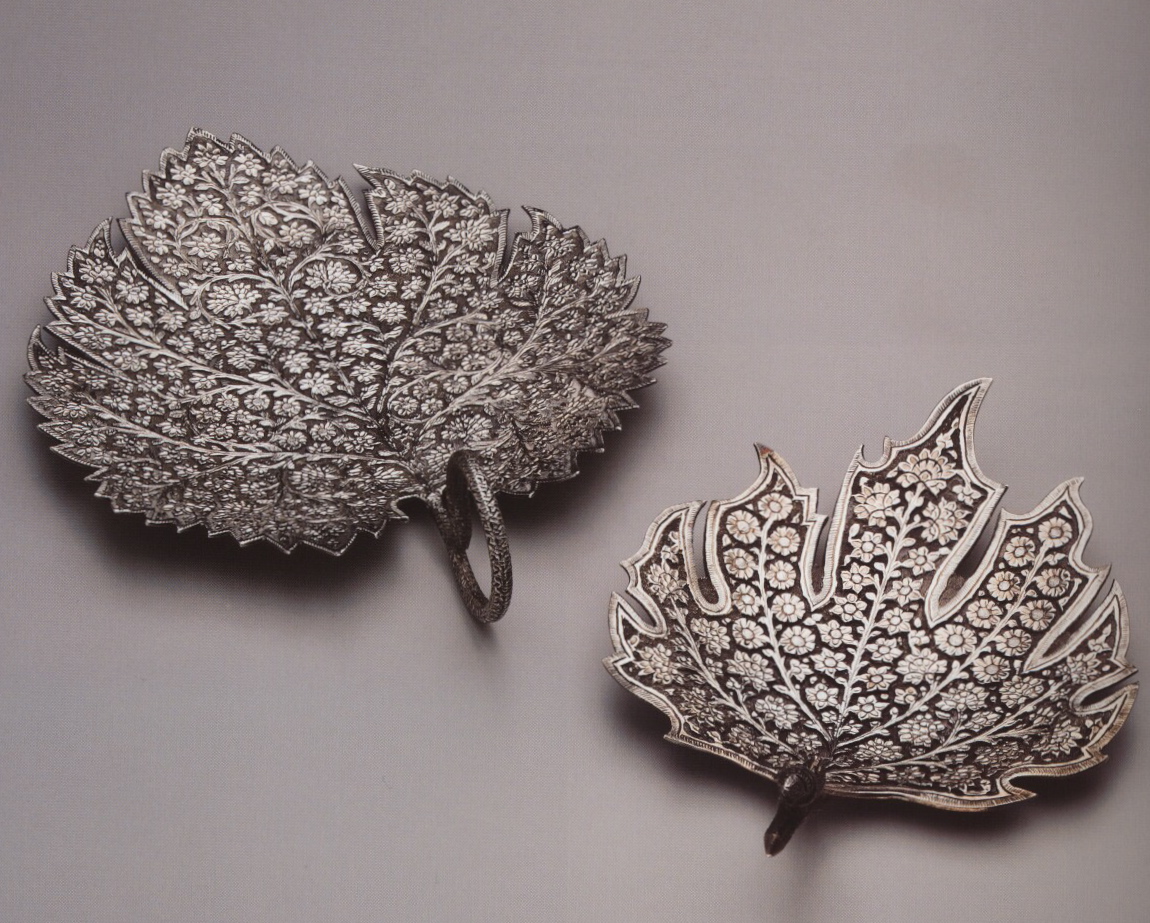 Chinar Leaf Plates, Kashmir, c. 1890
Chinar Leaf Plates, Kashmir, c. 1890
Until the late 20th century, the silver for the Raj, like other art of mixed heritage, was not widely valued by scholars who considered it “impure” and outside classical traditions. Fortunately, aesthetic horizons have expanded in recent years and this wonderful work is now getting the attention it deserves.
Wider Connections
Delight in Design: Indian Silver for the Raj by Vidya Dehejia
The Raj Quartet by Paul Scott
